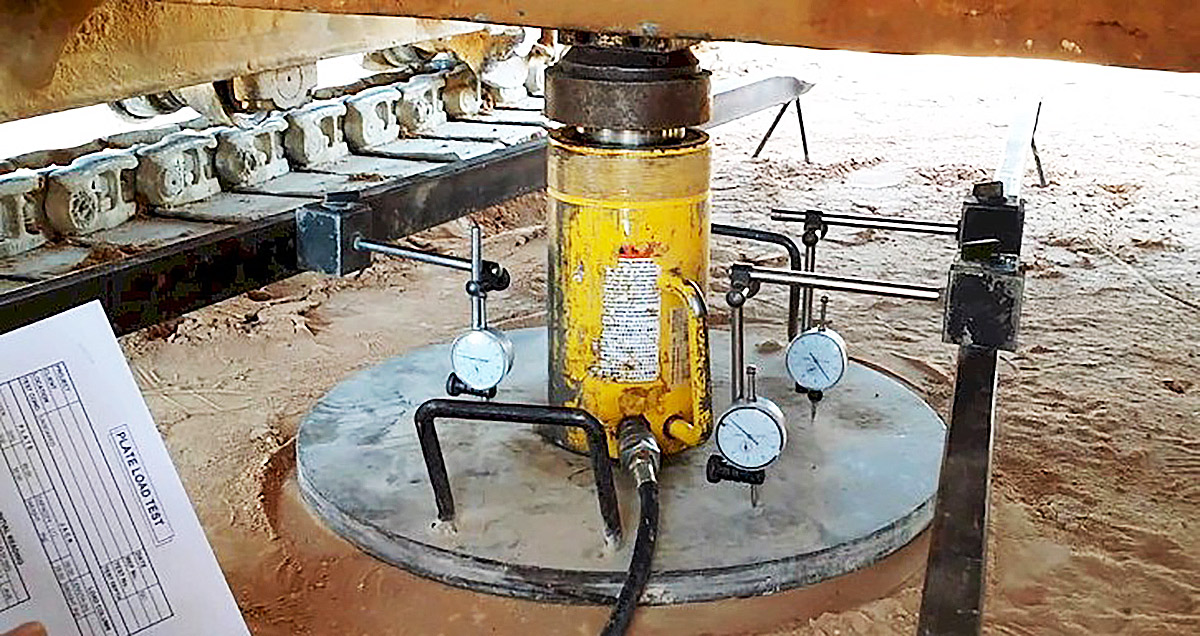In construction, a Plate Load Test is a method used to measure the strength of soil beneath a building’s foundation. It’s important because it helps engineers understand if the soil can support the weight of the structure.
During the test, a heavy steel plate is placed on the ground, and weight is gradually added to see how much the soil can bear before it starts to deform. The results help in designing safe and stable foundations for buildings.
Plate Load Tests are conducted to ensure that structures are built on solid ground, reducing the risk of problems like sinking or collapsing buildings.
Why conduct a Plate Load Test?
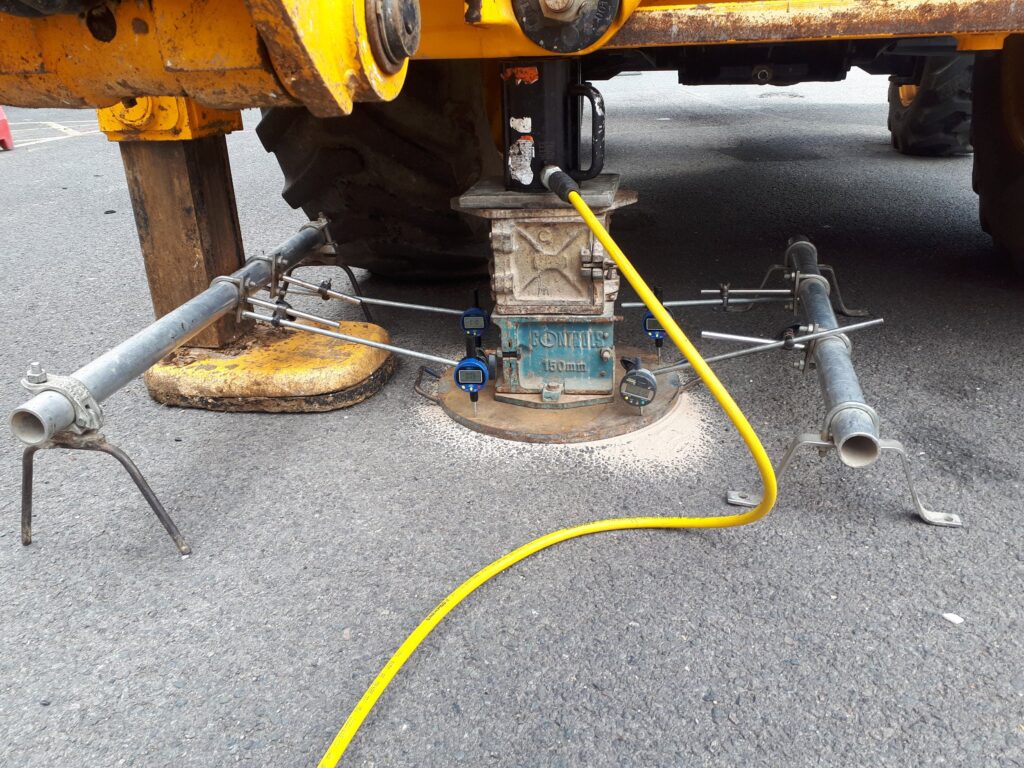
Conducting a Plate Load Test is essential to ensure the safety and stability of structures built on the ground. By applying a known pressure to a steel plate on the soil’s surface, engineers can determine the soil’s load-bearing capacity.
This information is critical for designing foundations that can support the structure’s weight without settling or collapsing over time. Plate Load Tests also help identify potential soil issues early in the construction process, allowing engineers to implement appropriate solutions and avoid costly problems later on.
In essence, Plate Load Testing provides valuable insights into soil behavior, enabling engineers to make informed decisions to create safe and reliable structures.
How does a Plate Load Test function?
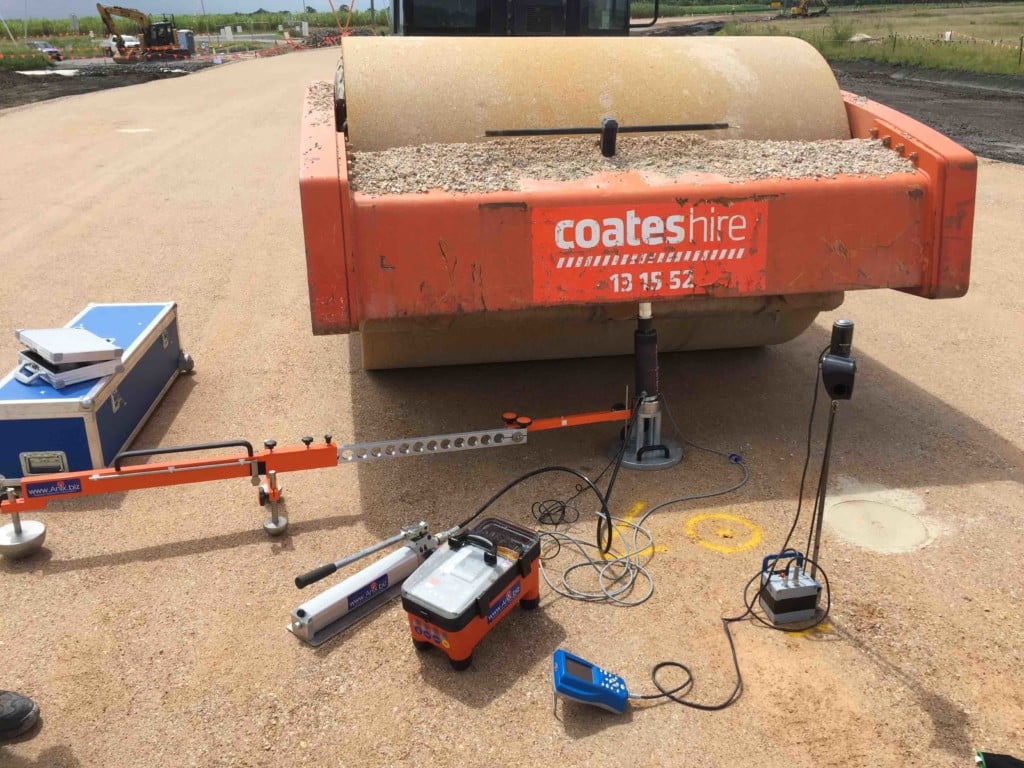
During a Plate Load Test, the first step involves selecting a suitable location on the construction site where the test will be conducted. This location should be representative of the soil conditions across the site and typically corresponds to where the building’s foundation will be situated.
Once the location is chosen, a heavy steel plate, often measuring about 30 inches (76 centimeters) in diameter, is placed on the ground surface. The plate is securely positioned and leveled to ensure uniform contact with the soil.
Next, a load is applied to the plate using hydraulic jacks or weights. The load is gradually increased in increments, and at each increment, the settlement or deformation of the plate is carefully measured using displacement gauges or other instruments.
Throughout the test, engineers closely monitor the rate of settlement and the corresponding load applied to the plate. This data is recorded and analyzed to create a load-settlement curve, which graphically represents the relationship between the applied load and the resulting settlement of the plate.
The test continues until a predetermined settlement criteria are met or until the plate reaches a maximum allowable load. Once the test is complete, engineers interpret the results to determine the soil’s load-bearing capacity and its ability to support the structure’s weight.
How do you interpret Plate Load Test results?
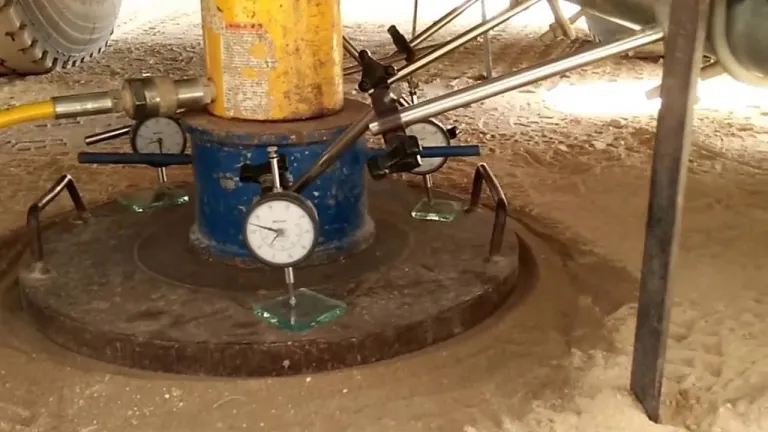
Interpreting Plate Load Test results involves analyzing the data collected
during the test to assess the soil’s load-bearing capacity and its ability to support the intended structure. Here’s how the interpretation process typically unfolds:
Load-Settlement Curve Analysis
Engineers examine the load-settlement curve generated from the test data. This curve shows how the settlement of the plate varies with increasing applied load. By analyzing the shape and characteristics of the curve, engineers can glean insights into the soil’s behavior under load.
Ultimate Bearing Capacity
Engineers determine the ultimate bearing capacity of the soil, which represents the maximum load it can support without excessive settlement. This value is crucial for designing foundations that can safely distribute the structure’s weight.
Rate of Settlement
The rate at which the soil settles under load is also assessed. A rapid rate of settlement may indicate weak or compressible soil conditions, which could pose risks to the stability of the structure over time.
Comparison with Design Criteria
The test results are compared with design criteria and standards to ensure compliance with safety and performance requirements. Engineers assess whether the soil’s bearing capacity meets the project’s specifications and adjust the foundation design accordingly if necessary.
Consideration of Site Conditions
Engineers take into account site-specific factors such as soil type, moisture content, and environmental conditions when interpreting the test results. These factors can influence the soil’s behavior and its suitability for supporting the structure.
Recommendations
Based on their analysis, engineers provide recommendations for foundation design and construction. They may suggest adjustments to the foundation type, depth, or reinforcement to ensure adequate support and stability for the structure.
What are the applications of Plate Load Test?
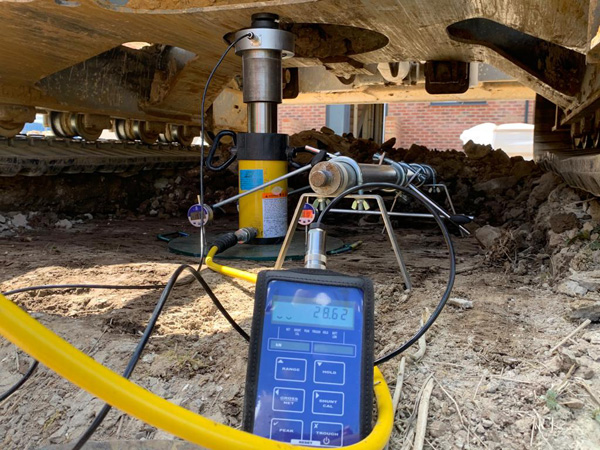
The Plate Load Test has several applications in geotechnical engineering and construction, including
Foundation Design: Plate Load Tests are used to assess the load-bearing capacity of soil beneath proposed foundation sites. The test results help engineers design foundations that can safely support the intended structure’s weight.
Site Investigation: Plate Load Tests provide valuable data about the soil’s strength and stiffness properties at specific locations on a construction site. This information aids in site characterization and helps identify potential challenges or risks related to soil conditions.
Quality Control: Plate Load Tests are often used as part of quality control measures during construction projects. By performing tests at various stages of construction, engineers can verify the adequacy of the soil and foundation design, ensuring compliance with project specifications and standards.
Soil Improvement: Plate Load Tests can help evaluate the effectiveness of soil improvement techniques, such as compaction, stabilization, or reinforcement. By testing the soil before and after improvement measures are applied, engineers can assess the impact of these techniques on the soil’s load-bearing capacity.
Structural Assessment: In addition to assessing soil properties, Plate Load Tests can also be used to evaluate the structural performance of existing foundations. By applying loads to the foundation and monitoring its response, engineers can assess its stability and determine if any remedial measures are needed.
What are the benefits of conducting a Plate Load Test?
Conducting a Plate Load Test offers several benefits in construction and geotechnical engineering
Accurate Assessment
Plate Load Tests provide accurate data on the load-bearing capacity of soil, allowing engineers to make informed decisions about foundation design and construction methods.
Risk Mitigation
By identifying soil weaknesses or inadequate load-bearing capacity early in the design phase, Plate Load Tests help mitigate risks associated with foundation settlement, structural instability, and costly repairs.
Optimized Foundation Design
The data obtained from Plate Load Tests enables engineers to optimize foundation designs by tailoring them to specific soil conditions, resulting in more efficient and cost-effective solutions.
Quality Assurance
Plate Load Tests serve as a quality control measure, ensuring that constructed foundations meet performance requirements and standards. This helps prevent construction defects and ensures the long-term durability of structures.
Site-Specific Solutions
Plate Load Tests allow engineers to assess soil properties at specific locations on a construction site, facilitating the development of site-specific foundation solutions that account for variations in soil composition and conditions.
Validation of Soil Improvement Techniques
Plate Load Tests can be used to evaluate the effectiveness of soil improvement techniques, such as compaction or stabilization, by assessing their impact on the soil’s load-bearing capacity.
Confidence in Construction
By providing reliable data on soil strength and foundation performance, Plate Load Tests instill confidence in construction projects, reassuring stakeholders of the structural integrity and safety of built environments.
FAQ
What is the limit of plate load test?
The plate load test can handle weights from a little bit to a lot, depending on how heavy the building or structure is supposed to be. It’s like a test to check if the ground can hold up the weight of the building without sinking or breaking.
What is plate load test for crane?
The plate load test for cranes is a special test to see if the ground can support a crane safely. It’s important to make sure the ground won’t sink or move when a heavy crane is put on it.
Is code used for plate load test?
Yes, there are rules and guidelines called codes that tell us how to do plate load tests correctly. These codes help make sure the tests are done the same way every time and give accurate results.
What is the standard specification of plate load test?
The standard way of doing a plate load test can vary depending on the project and where it’s being done. But there are some common rules like ASTM D1194 and BS 1377 that tell us how to do the test properly. These rules help us get reliable results that we can trust.
Final thoughts
The Plate Load Test is important in construction for checking how strong the soil is and if it can hold up buildings. Engineers press a steel plate onto the ground to see if the soil can handle the weight. This test helps design safe foundations, preventing problems like buildings sinking or collapsing.
Doing Plate Load Tests is crucial for making sure construction projects are safe and dependable. It gives precise information to design better foundations and helps control quality to reduce risks. Overall, Plate Load Testing makes sure buildings are on stable ground, giving confidence in construction.

